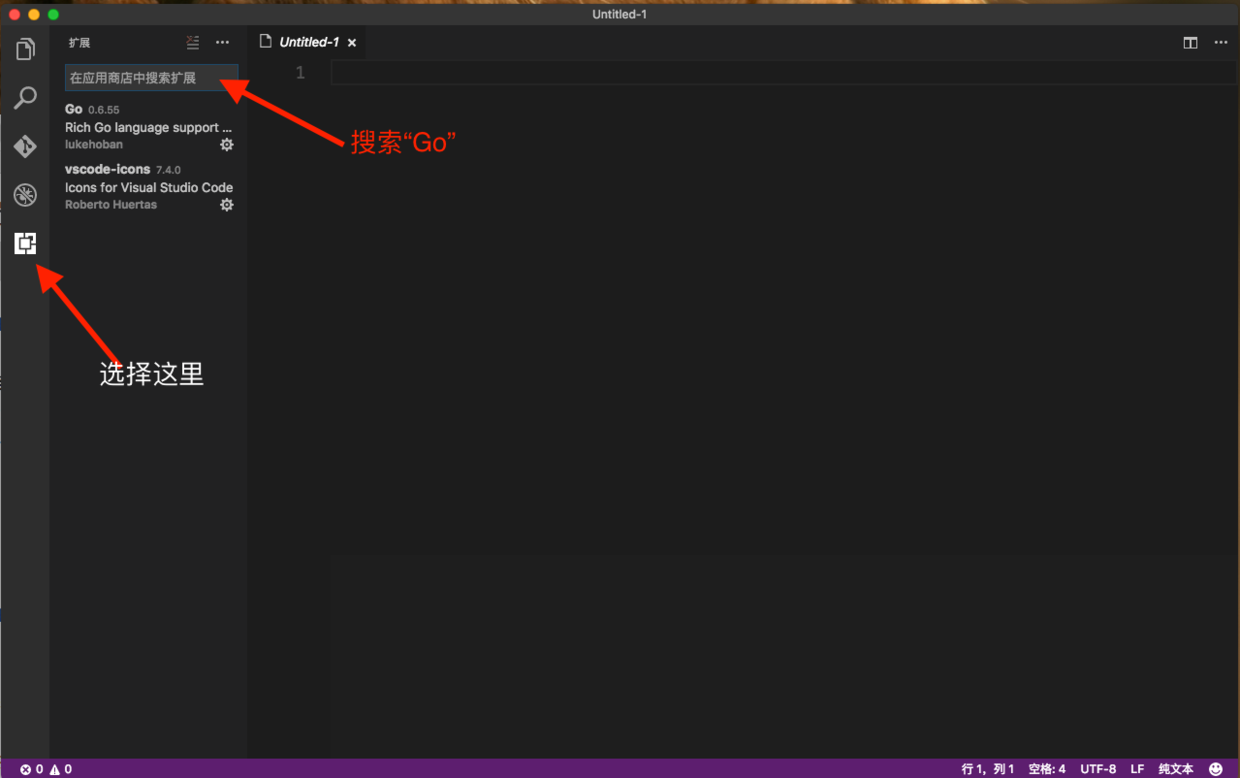

Of the only two other systems aiming for global coverage, Galileo calculates from an epoch and Beidou calculates from UTC without adjustment for leap seconds. Of the only two satellite systems with global coverage, GPS calculates its time signal from an epoch, whereas GLONASS calculates time as an offset from UTC, with the UTC input adjusted for leap seconds. There are at least six satellite navigation systems, all of which function by transmitting time signals. Lotus 1-2-3 observed the date due to an error by the time the error was discovered, it was too late to fix it-"a change now would disrupt formulas which were written to accommodate this anomaly". For example, Microsoft Excel observes the fictional date of 29 February 1900 in order to maintain bug compatibility with older versions of Lotus 1-2-3.
VISUAL STUDIO FOR MAC GOLANG SOFTWARE
Additionally, applications which need to represent historical dates and times (for example, representing a date prior to the switch from the Julian calendar to the Gregorian calendar) must use specialized timekeeping libraries.įinally, some software must maintain compatibility with older software that does not keep time in strict accordance with traditional timekeeping systems. Other more subtle timekeeping problems exist in computing, such as accounting for leap seconds, which are not observed with any predictability or regularity. A correction involving doubling the storage allocated to timekeeping on these systems will allow them to represent dates more than 290 billion years into the future. Many Unix-like operating systems which keep time as seconds elapsed from the epoch date of 1 January 1970, and allot timekeeping enough storage to store numbers as large as 2 147 483 647 will experience an overflow problem on 19 January 2038 if not fixed beforehand. These systems (if not corrected beforehand) would interpret the date 1 January 2000 as 1 January 1900, leading to unpredictable errors at the beginning of the year 2000.Įven systems which allocate more storage to the time representation are not immune from this kind of error. Most famously, older systems which counted time as the number of years elapsed since the epoch of 1 January 1900 and which only allotted enough space to store the numbers 0 through 99, experienced the Year 2000 problem. While a system's behavior after overflow occurs is not necessarily predictable, in most systems the number representing the time will reset to zero, and the computer system will think that the current time is the epoch time again. Therefore, when the number of time units that have elapsed since a system's epoch exceeds the largest number that can fit in the space allotted to the time representation, the time representation overflows, and problems can occur. Instead, each number stored by a computer is allotted a fixed amount of space. Problems with epoch-based computer time representation Ĭomputers do not generally store arbitrarily large numbers. On systems where date and time are important in the human sense, software will nearly always convert this internal number into a date and time representing a human calendar.

Such representation of time is mainly for internal use.

When times prior to the epoch need to be represented, it is common to use the same system, but with negative numbers. For example, for an epoch date of midnight UTC (00:00) on 1 January 1900, and a time unit of a second, the time of the midnight (24:00) between 1 January 1900 and 2 January 1900 is represented by the number 86400, the number of seconds in one day. Software timekeeping systems vary widely in the precision of time measurement (granularity) some systems may use time units as large as a day, while others may use nanoseconds. 3 Epoch in satellite-based time systems.2 Problems with epoch-based computer time representation.I am digging around, trying to learn something about synctex in this link but I'm really out of my element here. I have even considered the hypothesis that the name of the files might have had special characters, so I ran a test with a file named 'test.tex', and it still doesn't work. I have the LaTeX Preview extension installed which is supposed to do that, but the 'Show in Preview' button is absolutely inert, as well as double-clicking (or ctrl+click) the PDF.
VISUAL STUDIO FOR MAC GOLANG PDF
Likewise, I would like to click on the code and be taken to the PDF on the right. In other words, I have a side by side split window, tex file on the left and PDF on the right, and what I wish do is to be able to click on the PDF preview and be taken to the source code on the left. Everything has been working just fine except that, when I build and preview, I do not seem to be able to use the "Go to source" feature. I am currently trying to migrate to VS Code (on Mac) for creating and editing tex files.


 0 kommentar(er)
0 kommentar(er)
